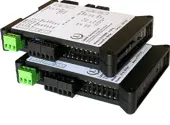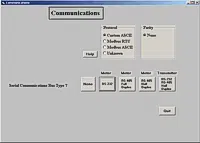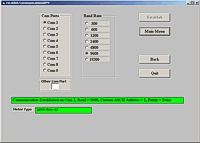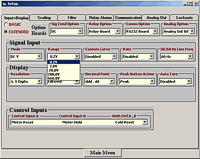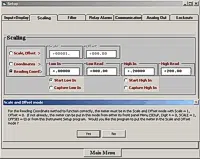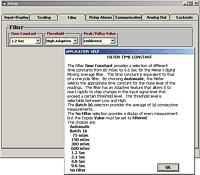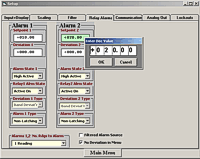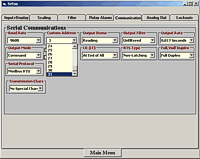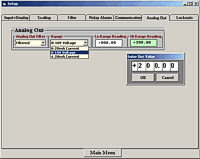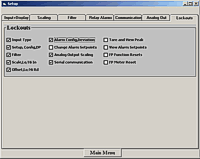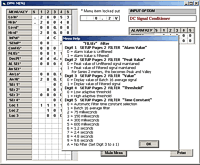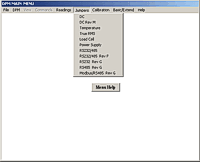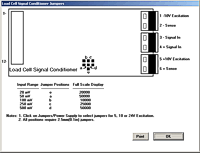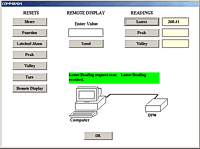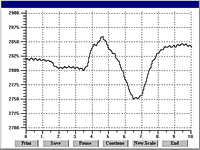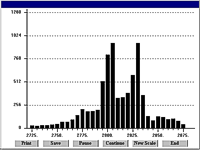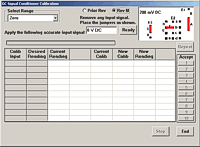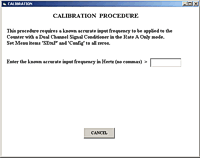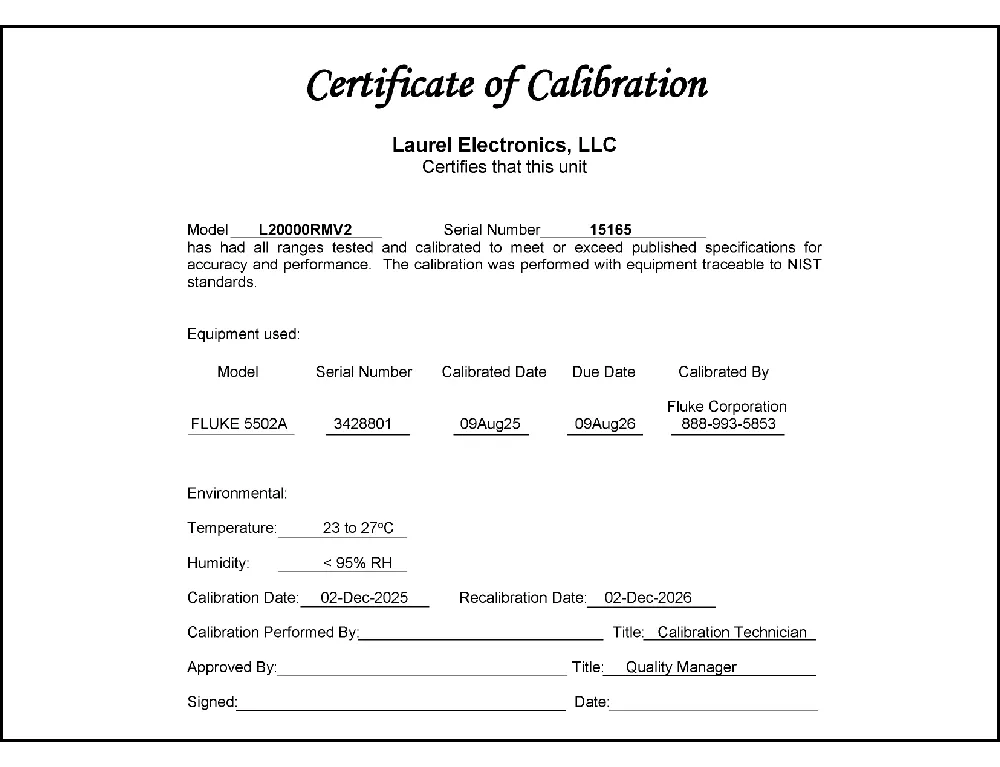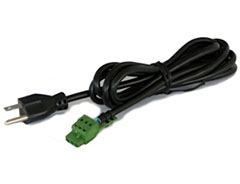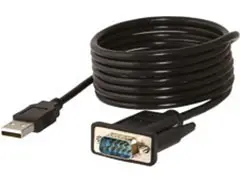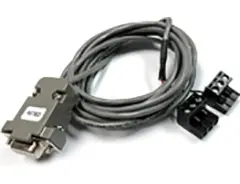Features
- Transmitter optimized for weighing applications
- Accuracy of 0.01% of reading ± 2 counts
- 4- or 6-wire hookup to avoid lead resistance effects
- 10V excitation supply for up to four 350-ohm load cells in parallel
- Count by 1, 2, 5, 10, 20, 50 or 100 with rounding
- Transmitter toggles between gross or net weight
- Auto-tare or manual tare, with tare value stored in non-volatile memory
- All input ranges are user selectable and factory calibrated
- Up to 60 conversions per second, Ideal for peak or valley capture
- Digital span adjust from 0 to ±99,999, zero adjust from -99,999 to +99,999
- 4-20 mA, 0-20 mA, 0-10V or -10V to +10V transmitter output, (isolated)
- Analog output resolution 0.0015% of span, accuracy ±0.02% of span
- RS232 or RS485 serial data, Modbus or Laurel ASCII protocol (isolated)
- Dual 120 mA solid state relays for alarm or control (isolated)
- 5V, 10V, 12V, or 24V dc transducer excitation output (isolated)
- Power 85-264 Vac / 90-300 Vdc or 10-48 Vdc / 12-32 Vac (isolated)
- DIN rail mount housing, 22.5 mm wide, detachable screw-clamp connectors
- Operating temperature from -40°C to 70°C (-40°F to 158°F)
Optional - Extended allows up to 180 data points for custom curve linearization and a rate derived from consecutive readings.
Certificates of Compliance
The Laureate™ LT Series DIN rail analog transmitter with serial data communication and analog outputs for versatile connectivity.
The digitally programmable transmitter features two relays for alarm or control. The series offers exceptional accuracy of 0.01% of reading ± 2 counts, with high read rates at up to 60 or 50 conversions per second. The LT Series transmitters offer the same high performance, signal conditioning, and programmable features as Laureate digital panel meters, counters, and timers.The Laureate 4-20 mA, 0-20 mA, 0-10V or -10V to +10V and RS232/RS485 output transmitter for scale weighing applications offers the same high performance, signal conditioning, and programmable features as Laureate digital panel meters, counters, and timers. It provides six voltage input ranges and four current input ranges, all factory calibrated and jumper selectable. This compact, inexpensive, and highly accurate transmitter features special firmware for weighing applications. It is available with the Laureate load cell or DC signal conditioner board. If you do not need the special weighing firmware, consider using the Laureate load cell transmitter or Laureate process transmitter.

The DC signal conditioner board can used in lieu of the load cell signal conditioner board, be set to ratiometric operation, and be used with the transmitter's 5 Vdc or 10 Vdc excitation. It's most sensitive full-scale range is ±200 mV with 10 µV resolution, while the load cell signal conditioner board offers most sensitive ranges of ±20 mV and ±50 mV, both with 1 µV resolution. Transmitters with both boards offer an accuracy of 0.01% of full scale ± 2 counts.
Display & Setpoint Functions for Weighing Applications
- Relay setpoint offset. The ON/OFF setpoint control action can be programmed to occur with a specified offset. For instance, if bags are to be filled to 100 lbs and the material delivery spout is known to hold and dispense an additional 2.5 lbs following shut-off, an offset of -2.5 lbs can be programmed. The setpoint can then be set to 100 lbs, and the filling valve will be automatically shut off when the measured weight reaches 97.5 lbs.
- Count-by function. The weight transmitter can be programmed so that it can be displayed via Laurel's Instrument Setup Software, which runs on a PC under MS Windows, is rounded off to multiples of 1, 2, 5, 10, 20, 50 or 100. For example, if count-by 10 is selected, the transmitter will display 20 for an internal count of 15 to 24.
- Fixed right-hand dummy zero. The transmitter can be shifted to the left for a fixed zero to the right, allowing values up to 999,990. The right-hand zero precludes the use of decimal points.
- Auto-zero function. An auto-zero limit from 0 to 9 counts can be programmed to compensate for load cell drift. Whenever the transmitter comes to rest within that limit from zero, it will auto-zero. Entering 0 disables auto-zero.
Easy scale calibration is achieved using a simple two-point calibration method. First, the desired LO IN reading is set to 0, and the desired HI IN reading is set to a desired value. With no weight on the scale, a button is pushed for LO IN. With a known weight on the scale, that button is pushed again for HI IN. The transmitter then automatically computes scale and offset for readout up to five digits in weight units.
Scale and offset can be provided by either of two user-selectable methods:
- With the coordinate reading method, the transmitter reads the high and low signal values, and the user enters the desired high an low reading values. The transmitter then calculates the span multiplier and offset. This method is ideal if an external calibration reference is available.
- With the manual coordinate method, the user enters the high and low input values in Volts plus the desired high and low reading values. This method is suitable if no external calibration reference is available.
A built-in, (isolated), 10V, 120 mA excitation supply can power up to four 350-ohm load cells in parallel. Load cell connection can be via 4 or 6 wires. With 4-wire load connection, the transmitter operates in a ratiometric mode to eliminate errors due to power supply variations. With 6-wire load connection, it also compensates for lead resistance, allowing long cable runs.
All signal conditioner board ranges are factory-calibrated, with calibration factors for each range securely stored in an onboard EEPROM. These factors can be scaled via software to accommodate external shunts, enabling field replacement of signal conditioner boards without necessitating recalibration of the associated transmitter. For optimal accuracy, factory recalibration is recommended annually. All Laurel Electronics instruments undergo factory calibration using the industry-leading Fluke calibrators, which are recalibrated yearly and certified traceable to national standards, ensuring the highest level of precision and reliability.
The optional extended Laureate computer board enhances Laureate transmitter by displaying rates derived from successive readings and enabling highly accurate custom curve linearization. For example, it can calculate liquid volume or flow rate in a horizontal cylindrical tank using levels from a 4-20 mA transmitter. Setup is straightforward: users input up to 180 data points into a spreadsheet or text file, and the computer calculates spline-fit segments, which are then downloaded to the transmitter for precise operation.
Laureate Transmitters are easily programmed with Laurel’s free Instrument Setup Software, downloadable from our website and compatible with Windows PCs, requiring a data interface board for setup.
High read rate of up to 50 or 60 conversions per second, the Laureate™ LT Series transmitter uses Concurrent Slope (US Pat. 5,262,780) analog-to-digital conversion to integrate signals over a full power line cycle (50 Hz or 60 Hz). This read rate enables peak and valley capture, real-time computer interfacing, and control applications. Peak and valley values are automatically captured and can be viewed using Laurel’s free Instrument Setup Software (compatible with Windows PCs) or transmitted as serial data.
Standard Hardware Features of Laureate LT Transmitters Include:
- Serial communications output, (isolated), RS232 or RS485 (half or full duplex), jumper selectable. Three protocols are user selectable: Modbus RTU, Modbus ASCII, or Laurel ASCII. Modbus operation is fully compliant with Modbus Over Serial Line Specification V1.0 (2002). The Laurel ASCII protocol is simpler than the Modbus protocol and is recommended when all devices are Laureates.
- 4-20 mA, 0-10V or -10V to +10V analog transmitter output, (isolated), jumper-selectable and user scalable. All selections provide 0.0015% resolution of output span and 0.02% output accuracy of a reading from -99,999 to +99,999 counts that is also transmitted digitally. Output isolation from signal and power grounds eliminates potential ground loop problems. Note that Ethernet data I/O is provided by Laurel's LTE series transmitters.
- Dual solid state relays, (isolated), for alarm or control. Rated 120 mA at 130 Vac or 180 Vdc.
- Selectable transducer excitation output, (isolated), user selectable 5V@100 mA, 10V@120 mA, 12V@100mA, or 24V@50 mA.
- Power 85-264 Vac, (isolated), low-voltage 10-48 Vdc or 12-32 Vac power is optional.
Digital signal filtering modes can be selected to ensure stable readings in electrically noisy environments.
- An unfiltered selection provides true peak and valley readings and aids in control applications.
- A batch average filter selection averages each 16 conversions.
- An adaptive moving average filter selection provides a choice of 8 time constants from 80 ms to 9.6 seconds. When a significant change in signal level occurs, the filter adapts by briefly switching to the shortest time to follow the change, then reverts back to its selected time constant. An Auto setting selects the time constant selection based on signal noise.
Two tare functions: auto-tare and manual tare. In auto-tare, an input line is grounded by an external pushbutton. This causes the current weight, which is normally the empty weight of the container to be stored in memory as an offset. In manual tare, the tare value can be entered manually via a control input pushbutton or using Laurel's free Instrument Setup Software.
Peak and valley values are automatically captured. These may be displayed via Laurel's free Instrument Setup Software, which runs on a PC under MS Windows or can be transmitted as serial data.
Two control inputs (CMOS/TTL levels, logic 0 = tied to digital ground, logic 1 = open) or dry contacts that can be set to control / activate 14 transmitter commands.
An (isolated) 5, 10, 12, or 24 Vdc excitation output is standard to power transducers or two-wire transmitters. Ratiometric operation, which automatically compensates for changes in the applied excitation, is jumper selectable for applications, such as bridges, where the signal to be measured is proportional to the excitation level.
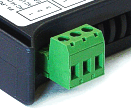
LT series DIN rail Transmitters & signal conditioners can be interfaced to a wide range of sensors and transducers using one of seven available plug-in signal conditioner boards. The transmitters duplicate the high performance (high accuracy and high read rate) and extensive programmable features of Laureate 1/8 DIN digital panel meters, counters, and timers. They utilize the same signal conditioners boards, much of the same firmware, and Laurel's free Windows-based Instrument Setup Software. They come in a compact DIN rail mount package with detachable screw-clamp connectors for easy wiring.
The LT series Transmitters feature isolated, user-selectable analog outputs (4-20 mA, 0-20 mA, 0-10V, or -10V to +10V), an RS232 or RS485 serial data interface, and dual 120 mA solid state AC/DC relays. Most models, except those with temperature or AC RMS signal conditioners, include an isolated 5, 10, 12, or 24 Vdc transducer excitation output.
Connecting Laureate LT Transmitters to a Local Area Network (LAN)
Up to 30 Laureate LT Transmitters and/or Digital Panel Meters can be configured for RS485 and daisy-chained to an LT Transmitter for seamless LAN integration. Alternatively, Laurel LTE series Ethernet transmitters can connect directly to a LAN via an Ethernet cable. Setup for both configurations is streamlined using Laurel’s free Instrument Setup Software, which simplifies node discovery and transmitter configuration.
Flexible Communication Options for LT Transmitters
Laureate Transmitters can be equipped with Laurel communication boards to support various interfaces and protocols. These include serial interfaces with ASCII or Modbus RTU protocols, and Ethernet interfaces with web access, ASCII, or Modbus TCP/IP protocols, ensuring versatile connectivity for your commercial applications.
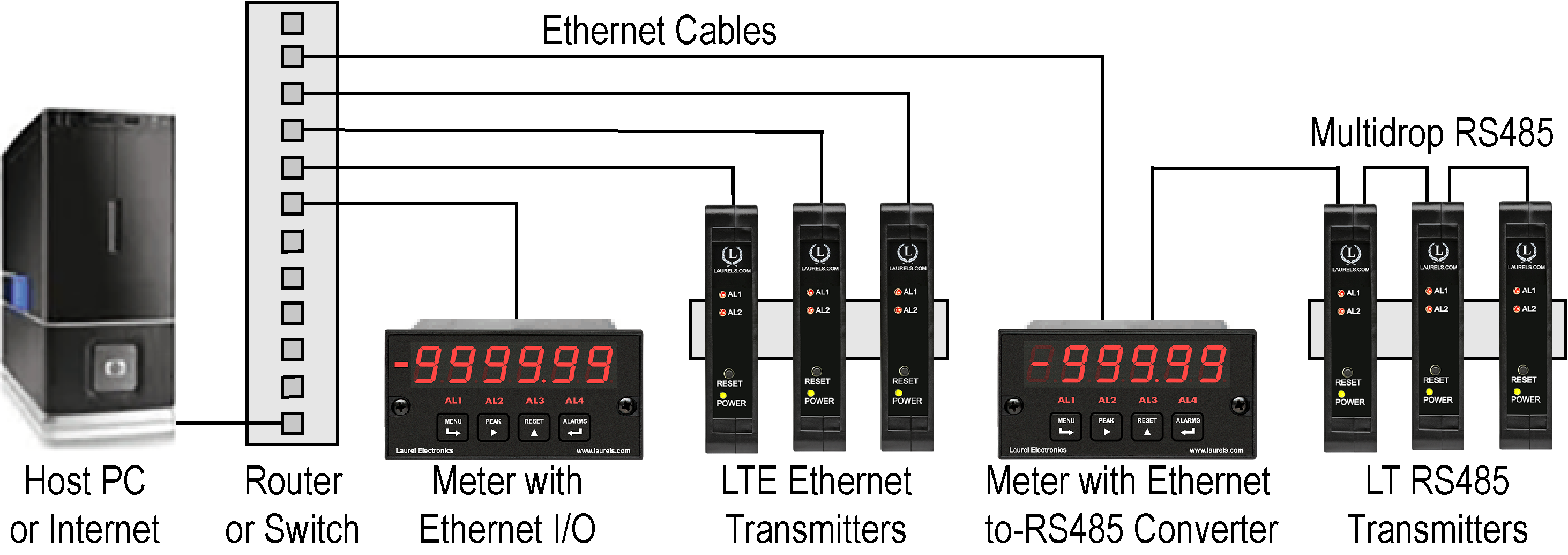
| LT Transmitter Signal Input & Function | Model Series | Analog Output | RS232 & RS485 | Dual Relays | |
|---|---|---|---|---|---|
| 1 | DC Input Voltage and Current | LT-DC |  |
 |
 |
| 2 | AC RMS Voltage or Current | LT-RMS |  |
 |
 |
| 3 | Process Voltage or Current | LT-P |  |
 |
 |
| 4 | Weighing Applications | LT-WA |  |
 |
 |
| 5 | Load Cell & Microvolt Signals | LT-WM |  |
 |
 |
| 6 | Thermocouple (Types J, K, T, E, N, R, S) | LT-TC |  |
 |
 |
| 7 | RTD Temperature | LT-RTD |  |
 |
 |
| 8 | Resistance in Ohms | LT-R |  |
 |
 |
| 9 | Frequency, Rate, Speed | LT-FR |  |
 |
 |
| 10 | Pulse Input Totalizer | LT-FR |  |
 |
 |
| 11 | Process Signal Totalizer | LT-VF |  |
 |
 |
| 12 | Sum, Difference, Ratio, Product of 2 Inputs | LT-FR |  |
 |
 |
| 13 | Batch Controller Pulse Input | LT-FR |  |
 |
 |
| 14 | Batch Controller Analog Input | LT-FR |  |
 |
 |
| 15 | On/Off Duty Cycle | LT-FR |  |
 |
 |
| 16 | Stopwatch Timing for Single Events | LT-FR |  |
 |
 |
| 17 | Average Time of Periodic Events | LT-FR |  |
 |
 |
| 18 | AC Phase Angle and Power Factor | LT-FR |  |
 |
 |
| 19 | Quadrature Position or Rate | LT-QD |  |
 |
 |
Scale input transmitter for scale weighing applications
| Full-Scale Input | Input Impedance | Zero Adjust | Span Adjust | Error at 25°C |
|---|---|---|---|---|
| ± 200.00 mV | 1 GΩ | |||
| ± 2.0000 V | 1 GΩ | -99,999 | 0 to | 0.01% FS |
| ± 20.000 V | 10 MΩ | to +99,999 | ±99,999 | ± 2 counts |
| ± 20.000 mA | 10 Ω | |||
| Recalibration: All ranges are calibrated at the factory. Recalibration is recommended every 12 months. | ||||
| Display | ||||
|---|---|---|---|---|
| Readout | 5 LED digits, 7-segment, 14.2 mm (.56"), red or green | |||
| Range | -99999 to +99999 | |||
| -999990 to +999990 (with fixed selectable right-hand zero) | ||||
| Rounding | Count by 1, 2, 5, 10, 20, 50, 100 | |||
| Indicators | Four LED lamps | |||
| Accuracy | ||||
| Error at 25°C | 0.01% FS ± 2 counts | |||
| Span tempco | 0.0015% of reading/°C | |||
| Zero tempco | 0.1 µV/°C (use auto-zero when temperature changes) | |||
| Calibration Method | 2 points using zero weight and known weight | |||
| Noise Rejection | ||||
| CMR, DC to 60 Hz | 130 dB | |||
| NMR at 50/60 Hz | 90 dB with min filtering | |||
| A-to-D Conversion | ||||
| Technique | Concurrent Slope (Pat 5,262,780) | |||
| A-to-D rate | 60/s at 60 Hz, 50/s at 50 Hz | |||
| Output update | 56/s at 60 Hz, 47/s at 50 Hz | |||
| Display update | 3.5/s at 60 Hz, 3/s at 50 Hz | |||
| Power Supply Boards (one required) | ||||
| Voltage, standard | 85-264 Vac or 90-300 Vdc | |||
| Voltage, optional | 12-32 Vac or 10-48 Vdc | |||
| Frequency | DC or 47-63 Hz | |||
| Power consumption (typ. with four 350Ω load cells at 10V) | 2.4W @ 120 Vac, 2.7W @ 240 Vac, 2.5W @ 10 Vdc, 2.6W @ 20 Vdc, 2.75W @ 30 Vdc, 3.0W @ 40 Vdc, 3.35W @ 48 Vdc | |||
| Excitation Output (standard) | ||||
| 5 Vdc | 5 Vdc ± 5%, 100 mA (jumper selectable) | |||
| 10 Vdc | 10 Vdc ± 5%, 120 mA (jumper selectable) | |||
| 12 Vdc | 12 Vdc ± 5%, 100 mA (jumper selectable) | |||
| 24 Vdc | 24 Vdc ± 5%, 50 mA (jumper selectable) | |||
| Output Isolation | 50 Vdc from signal ground | |||
| Ratiometric operation | Automatically compensates for changes in excitation level. | |||
| Analog Output Board (one optional) | ||||
| Output levels | 4-20 mA, 0-20 mA, 0-10V | |||
| Current compliance | 2 mA at 10V ( > 5 kΩ load) | |||
| Voltage compliance | 12V at 20 mA (< 600 Ω load) | |||
| Scaling | Zero and full scale adjustable from -99999 to +99999 | |||
| Resolution | 16 bits (0.0015% of full scale) | |||
| Isolation | 250V rms working, 2.3 kV rms per 1 min test | |||
| Relay Output Boards (one optional) | ||||
| Dual magnetic relays | 2 Form C, 8A max, 440Vac or 125Vdc max, 2500VA or 300W | |||
| Quad magnetic relays | 4 Form A (NO), 8A max, 440Vac or 125Vdc max, 2500VA or 300W | |||
| Dual solid state relays | 2 Form A (NO), AC or DC, 0V - 400V, 120Ma, 35Ohms (max at On-State) | |||
| Quad solid state relays | 4 Form A (NO), AC or DC, 0V - 400V, 120Ma, 35Ohms (max at On-State) | |||
| Relay commons | Isolated commons for dual relays or each pair of quad relays | |||
| Relay isolation | 250V rms working, 2.3 kV rms per 1 minute test | |||
| Relay latching modes | Latching or non-latching | |||
| Relay active modes | Active on or off, active high or low | |||
| Hysteresis modes | QA passband mode, split hysteresis, span hysteresis | |||
| Communication Boards (one optional) | ||||
| Board selections | RS232, RS485 with dual RJ11 connectors, RS485 with dual RJ45 connectors, USB, USB-to-RS485 gateway, WiFi with built-in antenna plus USB & RS485, WiFi with external antenna plus USB & RS485 | |||
| Protocols | Modbus RTU, Modbus ASCII, Modbus TCP (Ethernet), Laurel ASCII | |||
| Digital addresses | 247 (Modbus), 31 (Laurel ASCII), | |||
| Isolation | 250V rms working, 2.3 kV rms per 1 min test | |||
| Environmental | ||||
| Operating temperature | -40°C to 70°C (-40°F to 158°F) | |||
| Storage temperature. | -40°C to 85°C (-40°F to 185°F) | |||
| Relative humidity | 95% at 40°C, non-condensing | |||
| Protection | NEMA-4X (IP-65) when panel mounted | |||
| Mechanical | ||||
| Enclosure | 1/8 DIN, high impact plastic, UL 94V-0, color: black | |||
| Mounting | 1/8 DIN panel cutout required: 3.622" x 1.772" (92 mm x 45 mm). | |||
| Dimensions | 4.68" x 2.45" x 5.64" (119 mm x 62 mm x 143 mm) (W x H x D) | |||
| Maximum panel thickness | 4.5 mm (0.18") | |||
| Tightening Torque - Connectors | Screw terminal connectors: 5 lb-in (0.56 Nm) | |||
| Tightening Torque - Pawls | Digital Panel Meter Case Pawls: 5 lb-in (0.56 Nm) | |||
| Weight of base meter | 210 g (7.4 oz) typical (DPM, counter, timer, 6-digit remote display) | |||
| Weight of option boards | 30 g (1.0 oz) typical per board (analog output, relay output, communications) | |||
| Replacement Case Screws | ||||
| Size | 6 | |||
| Thread Pitch | 6-19 | |||
| Length | 1/2" | |||
| Head Style | Pan Head | |||
| Drive Style | Phillips | |||
| Head Diameter | 0.256-0.270 | |||
| Head Height | 0.087-0.097 | |||
| Full/Partial Thread | Full | |||
| Drive Size | 2 | |||
| Material | Steel | |||
| Finished | Black Oxide | |||
| General | ||||
| Programming Methods | Four front panel buttons or via Laurel's free Instrument Setup Software, which runs on a PC under MS Windows. | |||
| Security | Lockout options include using the front panel buttons, Laurel's free Instrument Setup Software, or a hardware jumper. | |||
| Warranty | 3 years parts & labor | |||
| Recalibration: All ranges are calibrated at the factory. Recalibration is recommended every 12 months. | ||||
Transmitter Pinout
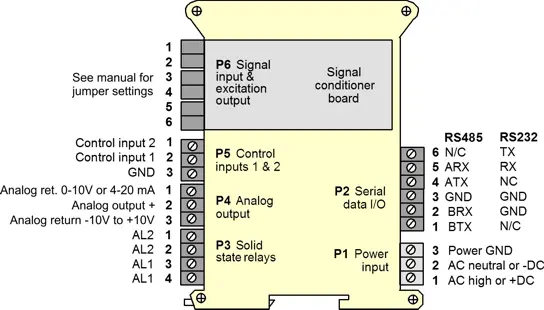
Free Instrument Setup Software for Series 2 Laureates
Free Downloadable Windows-based Instrument Setup (IS) software (Data Interface Board Required) for use with our programmable Digital Panel Meters, Scale Meters, Counters, Timers, Remote Displays, and Transmitters, are an easy method to set up Laureate 1/8 DIN digital panel meters, counters, timers, remote displays, and DIN-rail transmitters, as explained in the Instrument Setup Software Manual. Laureate 1/8 DIN instruments can also be set up from the front panel, as explained in their respective Owners Manuals. Instrument Setup software is of benefit whether or not the PC is connected to the instrument.
- When the PC is connected to the instrument, Instrument Setup software can retrieve the setup file from the instrument or open a default setup file or previously saved setup file from disk View Setup, then provides graphical user interface (GUI) screens with pull-down menus applicable to input, display, scaling, filtering, alarms, communications, analog output, and front panel lockouts. Fields that are not applicable to the instrument as configured are either left out or grayed out. Clicking on any item will bring up a detailed Help screen for that item. After editing, the setup file can be downloaded, uploaded to the instrument, or saved to a disk. The same setup file can then be downloaded into multiple instruments.
- When the PC is not connected to the instrument, the above GUI screens can be used to set up a virtual instrument. The setup file can then be saved to disk. Switching toView Menu then brings up a screen with the required front panel programming steps. This view can be printed out for use at the instrument site and to serve as a hard copy record.
Download Free Instrument Setup Software
Installation
Set User Account Control (UAC) of MS Windows to "Never notifiy me" so that Instrument Setup Software can create directories. The UAC change screen can be reached as follows:
- Under Windows 7, click on the Windows Start button in the lower left of the desktop and enter "UAC" in the search field.
- Under Windows 8, navigate to Control Panel, then to the "User Accounts and Family Safety" section, and click on "Change User Account Control Settings."
- Under Windows 10, click on the Windows Start button in the lower left of the desktop, then on "Settings", and enter "UAC" in the search field.
- Reboot your computer for the changed UAC setting to take effect.

RJ11-to-DB9 cable with rear view of DB9 connector to PC
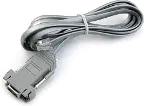
RS232 cable, meter to PC, P/N CBL01
Laureate 1/8 DIN Laureate instruments must be equipped with a serial communications board and be connected to the computer via a serial communications cable. The connection can be via RS232, RS485, USB or Ethernet. Following setup, the serial communications board may be removed from the instrument if desired. The wiring of the RS232 cable is illustrated above with end views of the two connectors.
Laureate LT Series transmitters come standard with a 3-wire serial interface, which can be jumpered for RS232 or RS485.
Laureate LTE Series transmitters come standard with an Ethernet interface.
Meter Setup Screens
Click on any of the reduced screens below for a full-size screen view, then click on the Back button of your browser to return to this page. The screens examples below are for a fully-loaded Series 2 Digital Panel Meter (DPM), which is connected to the PC via RS232. If the meter is a Series 1 meter (pre-2007), this is sensed by the software, and somewhat different screens are brought up. Please see Series 1 setup screens.











Meter Setup Utilities




From the Main Menu, click on Readings if your PC is connected to the meter. A pull-down menu then offers three choices: List, Plot and Graph.
- List presents the latest readings in a 20-row by 10-column table. Press Pause at any time to freeze the display. This is one method to capture peak readings.
- Plot generates a plot of readings vs. time in seconds. It effectively turns the DPM-PC combination into a printing digital oscilloscope.

- Graph generates a histogram where the horizontal axis is the reading and the vertical axis is the number of occurrences of readings. The display continually resizes itself as the number of readings increases.



Dimensions
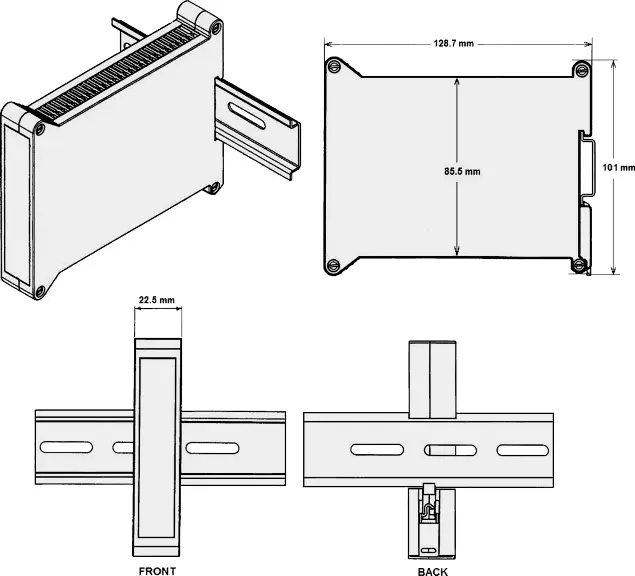
Dimensioned CAD assembly drawings in EPRT, STEP, x_t, .dwg, pdf file formats: Laureate-transmitter-case.zip (zipping prevents browser from opening CAD files as text files).
CAL-Analog
Certificate of Calibration
$65.00CBL02
USB-to-RS232 Adapter Cable
$47.00CBL04
RS232 Cable for LT Transmitters
$47.00What Defines an LT DIN Rail Analog Transmitter with Serial Data Communication and Analog Outputs for Weighing Applications?
Introduction
In industrial environments, accuracy and dependability are critical, particularly for processes involving weighing and load oversight. A key element in these systems is the analog transmitter, with the LT DIN Rail Analog Transmitter featuring serial data communication and analog outputs standing out as a specialized solution for weighing tasks. This article explores the capabilities, attributes, and advantages of this transmitter, highlighting its importance in industrial weighing setups.
Understanding Analog Transmitters
Analog transmitters are tools that transform physical inputs, such as weight or pressure, into standardized electrical signals. These signals support a range of functions, including monitoring, regulation, and data collection. For weighing applications, these transmitters are indispensable for converting load cell signals into actionable data.
LT DIN Rail Analog Transmitter: Key Features
- DIN Rail Mounting:
The LT analog transmitter is built to attach to a DIN rail, a widely accepted metal rail designed for mounting industrial control devices. This design supports easy installation and integration into current systems, optimizing space and simplifying electrical connections. -
Analog Outputs:
The transmitter offers standard analog outputs like 4-20mA or 0-10V, commonly adopted in industrial contexts. These outputs enable the transmitter to connect with diverse control systems, PLCs, and data recording devices. -
Serial Data Communication:
Beyond analog outputs, the LT DIN Rail Analog Transmitter includes support for serial data communication protocols such as RS-232 or RS-485. This feature allows for digital data exchange with control systems, supporting enhanced precision, remote oversight, and compatibility with advanced automation technologies. -
High Accuracy:
Precision is vital in weighing tasks, and the LT transmitter is developed to deliver high accuracy when converting load cell signals into analog and digital formats, crucial for processes where minor errors can have major impacts. -
Configurable Settings:
These transmitters are equipped with adjustable settings, letting users modify parameters like output range, filtering, and calibration. This adaptability makes the LT transmitter suitable for a variety of weighing systems and specific application requirements.
Applications in Weighing Systems
The LT DIN Rail Analog Transmitter is frequently utilized across several weighing applications, such as:
- Industrial Scales: It converts load cell signals in industrial scales into analog and digital outputs, ensuring accurate weight monitoring and management.
- Batching Systems: In systems where exact material quantities are weighed and distributed, the transmitter guarantees precise signal conversion, essential for consistent batching.
- Tank Weighing: For continuous weight monitoring of tanks and silos, the LT transmitter supplies dependable data for process control and inventory tracking.
- Process Automation: In automated setups, the integration of analog outputs with serial communication enhances efficiency and reliability by linking with other control equipment.
Benefits of Using LT DIN Rail Analog Transmitters
-
Improved Precision and Dependability: The high accuracy and robust performance of these transmitters ensure precise weight readings, reducing errors and enhancing product quality.
-
Adaptable Integration: The use of both analog and digital outputs makes these transmitters versatile, fitting a broad array of applications in industrial settings.
-
Simplified Installation and Upkeep: The DIN rail mounting and configurable options ease installation, integration, and maintenance, lowering downtime and operational expenses.
-
Adaptability to Future Needs: The inclusion of serial data communication ensures the LT transmitter aligns with modern automation systems, keeping it relevant as technology advances.
Conclusion
The LT DIN Rail Analog Transmitter with serial data communication and analog outputs is a vital component in contemporary weighing systems. Its blend of high accuracy, seamless integration, and versatility positions it as an invaluable asset in industrial applications where precision and reliability are non-negotiable. Whether deployed in scales, batching operations, or tank weighing, this transmitter significantly contributes to smooth and efficient processes.
In diverse industrial and commercial environments, precise weighing is key to maintaining product quality, optimizing resource use, and adhering to regulatory standards. A crucial tool for achieving these accurate measurements is the LT DIN Rail Analog Transmitter with serial data communication and analog outputs, widely employed in weighing applications to transform weight signals from load cells or other sensors into standardized analog signals and digital data for advanced processing and management. Let’s examine the primary areas where these transmitters are utilized.
1. Manufacturing and Production Lines
In manufacturing and production facilities, consistent product weight is essential. The LT DIN Rail Analog Transmitter, integrated with weighing scales or load cells, continuously tracks and relays weight data. This immediate feedback enables on-the-spot adjustments during production, ensuring products align with specified weight criteria. For instance, in the food and beverage sector, it assists in portion control and minimizes material waste.
2. Process Automation
Process automation systems depend on accurate, timely data to uphold efficiency and safety. In fields like chemical processing, pharmaceuticals, and petrochemicals, the LT DIN Rail Analog Transmitter plays a pivotal role by delivering precise weight data. These measurements are vital for dosing, mixing, and filling tasks. The analog outputs support integration with PLCs (Programmable Logic Controllers), while serial data communication facilitates remote monitoring and control, streamlining complex automated processes.
3. Inventory Management and Material Handling
For industries handling bulk materials, such as agriculture, mining, and construction, managing inventory poses a significant challenge. The LT DIN Rail Analog Transmitter is incorporated into weighing systems to oversee stock levels in silos, hoppers, and storage tanks. By transmitting accurate weight information to inventory management systems, businesses can optimize stock, schedule reorders, and avoid overstocking or shortages. It also ensures correct material quantities are handled, boosting operational efficiency.
4. Logistics and Distribution
In logistics and distribution hubs, accurate weight measurement is necessary for determining shipping costs, complying with transport regulations, and ensuring safe goods handling. The LT DIN Rail Analog Transmitter is applied in weighing platforms and conveyor systems to supply real-time weight data. This information is crucial for optimizing load distribution, avoiding overloading, and meeting weight requirements, with serial communication enabling smooth integration with warehouse management systems (WMS) and digital platforms.
5. Research and Development
In research and development labs, exact measurements are often needed for experiments and product testing. The LT DIN Rail Analog Transmitter offers the accuracy and reliability required for these tasks. Whether involved in testing new materials, developing pharmaceuticals, or conducting scientific studies, these transmitters ensure consistent weight measurements. Digital data communication further allows researchers to record and analyze data effectively.
6. Energy and Utilities
In the energy sector, especially in power generation and utilities, the LT DIN Rail Analog Transmitter is utilized in weighing applications to monitor fuel levels, manage waste, and allocate resources. Precise weight data is essential for optimizing fuel consumption, handling by-products, and maintaining efficient, sustainable energy production. The transmitter’s sturdy design ensures reliable operation in the harsh conditions typical of energy facilities.
Conclusion
The LT DIN Rail Analog Transmitter with serial data communication and analog outputs is a versatile and indispensable part of modern weighing applications across multiple industries. Its capacity to deliver accurate, real-time weight data and interface with both analog and digital systems makes it essential for upholding product quality, refining processes, and complying with industry standards. From manufacturing to research, these transmitters are foundational to achieving precise and dependable weighing results.
Less Information.








